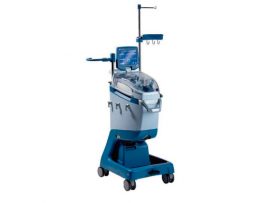Abstract Objective To test the feasibility and effectiveness of implementing the HemoClear microfiltration cell-salvage system for cesarean sections in South Africa. Methods We conducted a prospective experimental single-arm feasibility study..
Read MoreAbstract Background/Objectives: Allogeneic transfusion is a commonly used method to replace blood and blood elements lost during cardiac surgery, but it also has quite undesirable effects. The use of Cell Saver..
Read MoreAbstract Objective Hemoconcentration and cell saver use are blood conservation techniques that are often used in cardiac surgery to salvage the patient's own blood to reduce autologous transfusion. The purpose..
Read MoreAbstract Introduction Major perioperative blood loss often necessitates allogeneic blood transfusions, leading to adverse outcomes and straining healthcare resources. Intraoperative cell salvage (ICS) offers benefits like reduced adverse reactions, optimised blood..
Read MoreAbstract Introduction Cardiotomy suction blood is used in cardiopulmonary bypass (CPB) surgery to maintain blood volume in the CPB system, although it is known to contain micro emboli, cytokines and..
Read MoreAbstract Purpose of review The worldwide leading cause of maternal death is severe maternal hemorrhage. Maternal hemorrhage can be profound leading to an entire loss of blood volume. In the..
Read MoreAbstract The objective of this study was to investigate the efficacy of intraoperative Cell Saver blood salvage during emergency surgery for massive hemothorax on minimizing perioperative allogeneic red blood cell..
Read MoreAbstract Study Design. A retrospective, propensity-matched observational study. Objective. To assess the impact of cell saver (CS) homologous transfusion on perioperative medical complications in adult patients undergoing spinal deformity surgery...
Read MoreAbstract Objective This study was aimed to elucidate the effect of the intraoperative cell saver (CS) on hyperlactatemia of patients who underwent cardiac surgery. Design A sub-analysis of the CS..
Read MoreAbstract Objective Cardiopulmonary bypass (CPB) is a requisite for correction of congenital heart disease by open-heart surgery and induces a systemic inflammatory response that can lead to complications such as..
Read MoreAbstract Introduction: A substantial amount of blood loss occurs during the open repair of aortic aneurysms or dissections. The aim of the present study is to determine the efficacy and..
Read MoreAbstract Background Removal of cytokines, chemokines, and microvesicles from the supernatant of allogeneic erythrocytes may help mitigate adverse transfusion reactions. Blood bank–based washing procedures present logistical difficulties; therefore, we tested..
Read More




